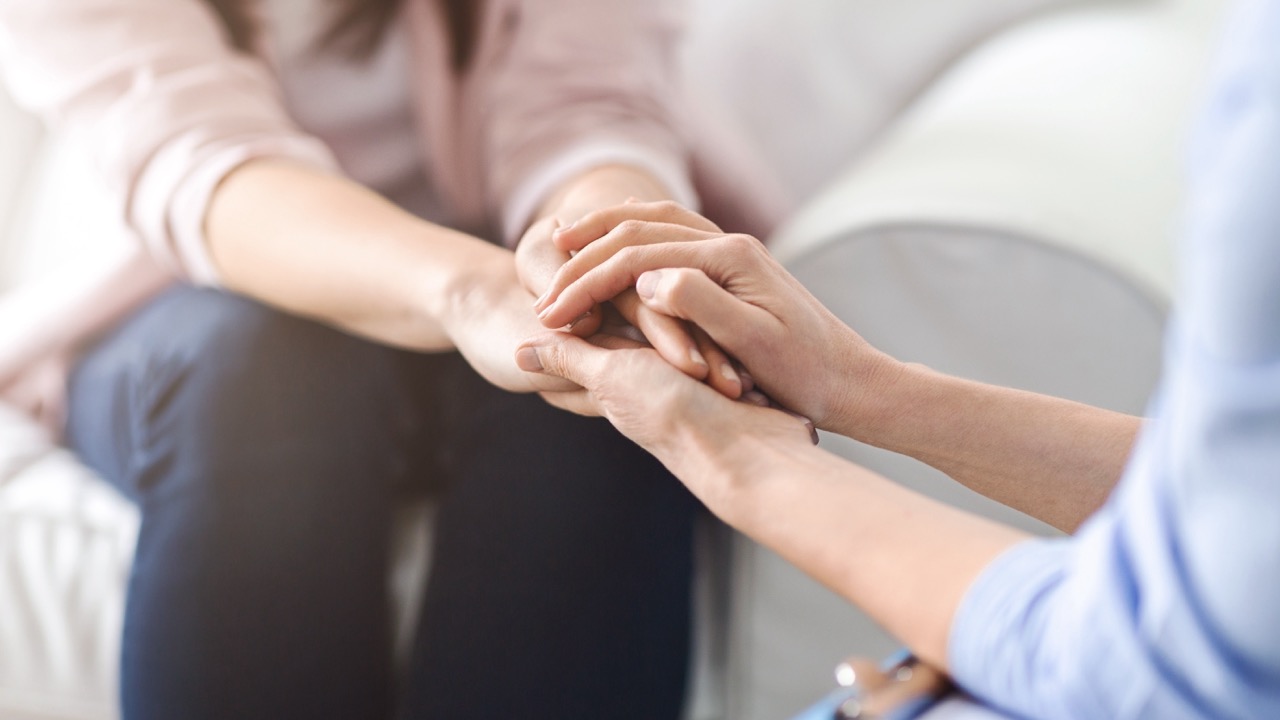Sexuality and Mental Health
Sexuality is an aspect of human identity that includes sexual orientation, attraction, desires, and how a person expresses intimacy. It also plays a role in how people relate to their bodies and the beliefs they hold about sex and relationships.
Sexuality is deeply personal and won’t look the same for everyone. For some, it may shift or evolve. Struggling with mental health can affect how a person experiences desire, while sexual dysfunction can lead to feelings of guilt, shame, or low self-worth.

Understanding Sexual Orientation
A person’s sexual orientation is an integral part of their identity. While it’s easy to stick to labels like straight, gay, or bisexual, sexuality is much more nuanced than many people realize.
Some common sexual orientations include [1]:
- Heterosexual: Also known as “straight,” these individuals are attracted to people of a different gender.
- Homosexual: Often referred to as “gay” or “lesbian,” these individuals are attracted to people of the same gender.
- Bisexual: This orientation includes people who are attracted to more than one gender.
- Pansexual: Individuals who are pansexual are attracted to others regardless of gender.
- Asexual: People who are asexual experience little to no sexual attraction to others, regardless of gender.
- Queer: This is a broad label used by those who feel their sexual identity doesn’t fit neatly into traditional categories.
Sexual orientation isn’t always visible, and that’s okay. Some people are open about who they’re attracted to, while others choose to keep that part of their lives private, sometimes out of personal comfort and at other times due to fear of judgment or misunderstanding.
For example, an asexual person may feel pressure to explain their sexuality to others and worry that it won’t be taken seriously.
Everyone’s experience with orientation is different. What matters most is that people feel safe and supported in expressing it in the way that feels right for them.
Integrating Mental and Sexual Health
While people often think of sex as something that only affects the body, much of a person’s sex life takes place in the brain [2]. For all genders and sexual orientations, how a person feels plays a significant role in arousal.
Struggling with anxiety, depression, or another mental health issue can make it challenging to have or enjoy sex. On the flip side, when someone is physically unwell, sex is usually far from their mind.
Sexual dysfunction is relatively common in the U.S. and globally. In the U.S. alone, around 31% of men and 43% of women experience some form of sexual dysfunction [2]. For men, the most common issues include premature ejaculation and erectile dysfunction.
Among women, about one-third report a decrease in sexual desire. These experiences can lead to feelings of guilt, shame, anxiety, and other challenging emotions, sometimes keeping people from seeking help.
Mental health conditions like anxiety and depression also play a role in the development of sexual dysfunctions. Men are more likely to experience performance anxiety, including concerns about erection durability or erectile dysfunction, both of which can cause significant stress and lower self-esteem.
Depression, which tends to affect women at higher rates than men, can lead to feeling less desirable, more self-conscious about the body, or hesitant to engage in sexual activity, even with a trusted partner [2].
Stigma and Shame
Regardless of one’s sexuality, stigma and shame can have a powerful impact on how people express themselves. Whether someone identifies as heterosexual, asexual, LGBTQ+, or anything in between, everyone grows up with different ideas about what is culturally acceptable, and these beliefs can affect some people more deeply than others.
Even for those who are no longer religious, it can be hard to separate from the beliefs and teachings they were raised with, especially when it comes to sex and sexuality. People who grew up in particularly conservative religious environments may have been taught that sexual desire is sinful, or that only heterosexual marriage is valid in the eyes of the church.
Religious shame often runs deep and tends to linger. A person may feel guilt or fear around their desire, or feel “dirty” for exploring what sexuality means to them.
Cultural expectations around gender also shape how people experience sexual shame. Although things are shifting, many women and girls are still taught, directly or indirectly, to suppress their sexuality. This can lead to shame around feeling desire or to the belief that their sexuality exists for others, not for themselves.
Letting go of shame and guilt can be difficult, but it is not impossible. Therapy and trauma-informed support groups can be beneficial. In some cases, creating physical or emotional distance from people or environments that reinforce shame can also support healing.
Intersectionality and Identity
Sexuality and mental health do not exist in a vacuum; they are influenced by many aspects of identity, including race, religion, culture, gender identity, and socioeconomic status. These overlapping factors can create unique challenges for individuals as they navigate both self-expression and access to care.
For example, someone may face racism within queer spaces or homophobia within racial or religious communities, leading to isolation and disconnection [3]. Others may struggle with financial constraints that limit their ability to access mental health resources, or with language barriers that make existing services feel out of reach.
Religious beliefs and upbringing can also contribute to shame or guilt, particularly for those raised in conservative or fundamentalist environments [4].
Addressing these challenges requires a more inclusive and culturally sensitive approach. Mental health providers who recognize how culture, race, and gender shape lived experiences are better equipped to build trust and offer meaningful support. In communities with limited resources, peer-led and community-based programs can also play a vital role in acceptance and belonging.
Sexual Trauma and Healing
Sexual trauma can have a lasting impact on both mental health and a person’s relationship with their sexuality. People who’ve experienced sexual trauma at any point in their lives may struggle with feelings of guilt, fear, or shame, and may find it difficult to trust new partners. They might also have trouble feeling safe in their bodies or avoid sexual intimacy altogether.
Survivors of sexual assault often experience symptoms such as anxiety, depression, post-traumatic stress, dissociation, or low self-esteem [5]. Certain triggers, whether it’s a specific touch, word, or environment, can bring up painful memories or flashbacks.
It’s important to remember that healing from sexual trauma isn’t linear and looks different for everyone. Working with a trauma-informed therapist is often a helpful starting point.
Practices such as somatic therapy, yoga, or breathwork can also support mind-body reconnection and help alleviate dissociative symptoms. Setting boundaries, both physical and emotional, can empower survivors to feel safe, grounded, and respected as they navigate intimacy on their terms.
Consent and Boundaries
Consent is one of the most important foundations of both sexual and mental well-being. It ensures that intimacy is safe, respectful, and affirming. Consent is not just about saying “yes” or “no”. It’s an ongoing conversation that requires trust, communication, and respect for personal boundaries.
When people feel their boundaries are honored, they are more likely to experience intimacy as empowering rather than harmful. Conversely, when boundaries are crossed or ignored, it can lead to trauma, shame, and long-lasting effects on mental health.
Openly discussing needs, comfort levels, and desires can feel uncomfortable at first, especially in cultures where sexuality is stigmatized. Yet developing these skills is essential for creating healthy relationships. Consent supports emotional safety, reduces anxiety, and builds stronger connections by ensuring that all parties feel seen, heard, and valued.
By teaching and normalizing consent, both within relationships and in society at large, we create a culture that supports sexual well-being and strengthens mental health.
Safe and Supportive Spaces
Sexuality is a personal and evolving part of human identity. It is shaped by orientation, mental health, culture, and lived experience.
Stigma, shame, trauma, and barriers related to identity can complicate both expression and well-being. At the same time, practices that support inclusion and respect, such as honoring consent and creating safe spaces, help individuals build resilience and confidence.
Promoting sexual health is not only about addressing trauma or dysfunction. It also means creating environments where people feel safe, understood, and free to express who they are without fear of judgment. Reducing stigma, supporting survivors, and encouraging open and respectful conversations are key steps in strengthening both sexual well-being and mental health.
Recognizing the full diversity of sexuality is both an act of individual healing and a step toward building communities that are healthier, safer, and more compassionate.
- American Psychological Association. (n.d.). Sexual orientation & homosexuality. https://www.apa.org/topics/lgbtq/orientation
- Ellis, D. (2022, June 10). Integrating mental and sexual health. News-Medical. https://www.news-medical.net/health/Integrating-Mental-and-Sexual-Health.aspx
- Duncan, D. T., Cook, S. H., Wood, E. P., Regan, S. D., Chaix, B., Tian, Y., & Chunara, R. (2023). Structural racism and homophobia evaluated through social media sentiment combined with activity spaces and associations with mental health among young sexual minority men. Social Science & Medicine, 320, 115755. https://doi.org/10.1016/j.socscimed.2023.115755
- Ley, D.J. (2017, August). Overcoming religious sexual shame. Psychology Today. https://www.psychologytoday.com/gb/blog/women-who-stray/201708/overcoming-religious-sexual-shame
- Mayo Clinic Press. (2023, June). Healing from sexual abuse. Mayo Clinic Press. https://mcpress.mayoclinic.org/women-health/healing-from-sexual-abuse/
The Clinical Affairs Team at MentalHealth.com is a dedicated group of medical professionals with diverse and extensive clinical experience. They actively contribute to the development of content, products, and services, and meticulously review all medical material before publication to ensure accuracy and alignment with current research and conversations in mental health. For more information, please visit the Editorial Policy.
We are a health technology company that guides people toward self-understanding and connection. The platform provides reliable resources, accessible services, and nurturing communities. Its purpose is to educate, support, and empower people in their pursuit of well-being.
Megan Eileen McDonough is a health and wellness writer with 10+ years of experience in mental health, women’s health, postpartum care, and adolescent health.
Holly Schiff, Psy.D., is a licensed clinical psychologist specializing in the treatment of children, young adults, and their families.
The Clinical Affairs Team at MentalHealth.com is a dedicated group of medical professionals with diverse and extensive clinical experience. They actively contribute to the development of content, products, and services, and meticulously review all medical material before publication to ensure accuracy and alignment with current research and conversations in mental health. For more information, please visit the Editorial Policy.
We are a health technology company that guides people toward self-understanding and connection. The platform provides reliable resources, accessible services, and nurturing communities. Its purpose is to educate, support, and empower people in their pursuit of well-being.


